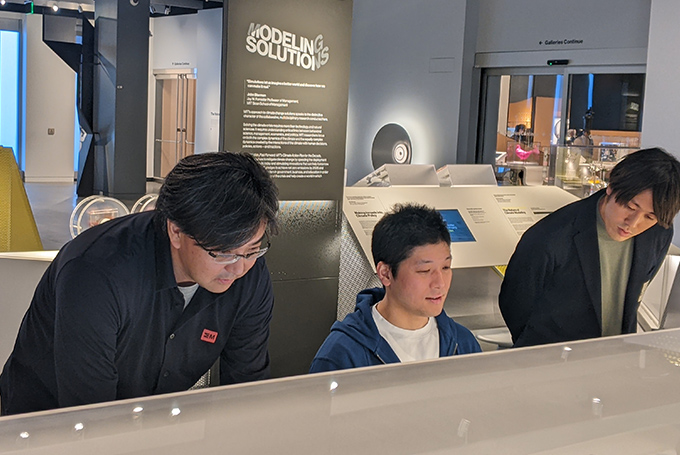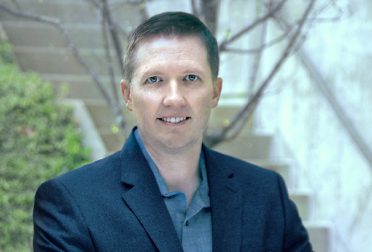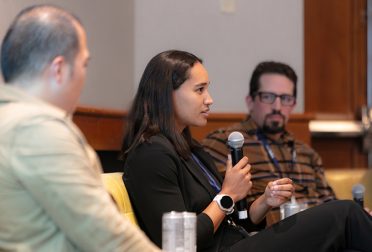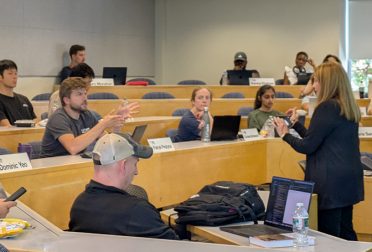System Design and Management welcomed visitors from Hiroshima and Tokyo’s startup community to the MIT Museum on February 14 for a discussion of innovation ecosystems. The visitors included the heads of medical innovation startups; CIC Tokyo, a company that operates innovation campuses to support entrepreneurs; and JETRO, a nonprofit agency of the Japanese government that promotes international trade. The visitors met with SDM leaders, alumni, and current students, who shared their experiences with the innovation landscape in Massachusetts. A discussion followed on the differences between Japanese universities and the MIT approach to interdisciplinary education and preparation for entrepreneurship.
Atsuhiro Ishii, of PtBio, Inc., appreciated the chance to explore the exhibits at the Museum, particularly the Gene Cultures gallery that focused on biotechnologies and genetic discoveries. His startup uses gene editing technology similar to CRISPR to create breakthroughs such as microbes that consume carbon dioxide. “It’s important to make people understand the deep technology, so this museum is really important and very interesting,” he said.
After the group viewed the exhibits, Bryan Moser, SDM Academic Director, gave an overview of MIT and the SDM program. Bryan drew on his personal experiences to offer his perspective on the differences between MIT and the Japanese approach to higher education. He is an alumnus of MIT and the University of Tokyo, has worked in Japan, and continues to teach at the University of Tokyo. “In Japan, the role of the university is to protect knowledge,” he said. By comparison, the motto of MIT, mens et manus or ‘mind and hand,’ conveys that “to be a better scholar, I learn by doing; to be better at doing, I must be a scholar,” he added.
Ben Linville-Engler, SDM ’16, now Chief Investment Strategist and Program Executive for the Massachusetts Tech Collaborative (MassTech), also spoke on Massachusetts as an engineering ecosystem. His talk highlighted the ways in which MassTech, as a nonprofit agency focused on strengthening the tech and innovation economy, works with a broad variety of stakeholders for advancing these goals and harnessing the talent of residents. As an alum of SDM, Linville-Engler noted that he approaches this constellation of stakeholders as an “ecosystem of ecosystems.”
The visit concluded with an open discussion among attendees of the differences in the educational systems and cultural openness to innovation and startups. Rei Iijima, a first-year SDM student from Japan’s Ministry of Economy, Trade and Industry (METI), noted how much she enjoys the open, collaborative nature of MIT and meeting people from many different departments. Ishii agreed, based on his experiences at the museum and in a visit to the Engine, saying that “the essence of MIT is to make collaboration.”
“MIT stimulates these unplanned or serendipitous collisions,” Moser said. “Similarly, CIC creates an environment where these collisions are possible.”




